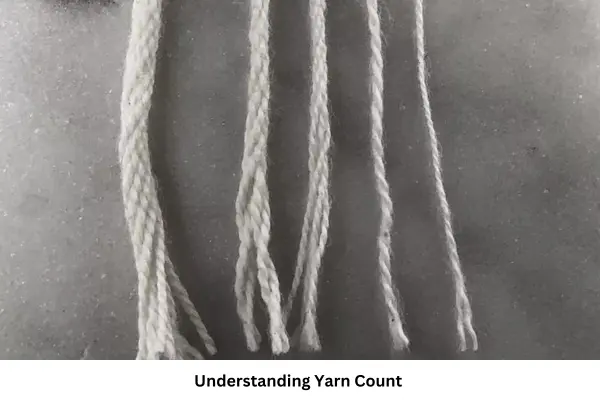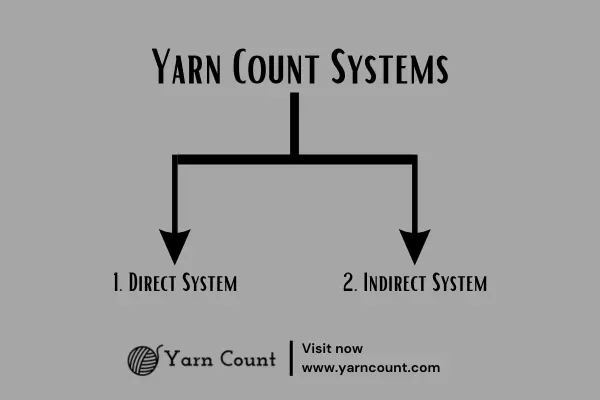In the textile industry, yarn is the main intermediate product. It is also the raw material for applications like dyeing, knitting, and clothing. Depending on the yarn type, thinner or thicker, the woven fabric gets softer or rougher. In this article, we will go through the yarn count conversion chart briefly.
Table of Contents
What is Yarn Count?
Yarn count refers to the yarn thickness. It is mostly represented in methods like Tex, Dtex, Denier, Ne, and Nm.

Among them, Ne and Denier are the most common methods used in the textile industry.
Yarn Count Systems
Weight and length are critical components in the yarn count computation process. These computations use two primary systems: direct and indirect.
1. Direct System: Here, yarn count means the weight of yarn per unit length
To find out how thick or thin yarn is, you can use this formula:
Yarn Count (Nm) = (Weight of the sample / Unit weight of the sample) / (Length of the sample / Unit length of the sample)
In simpler terms:
Nm is the yarn thickness.
W is the weight of the sample.
w is the unit weight of the sample.
L is the length of the sample.
l is the unit length of the sample.

2. Indirect System: Here, yarn count means, or is measured as the length of yarn per unit weight.
This formula helps express yarn count in an indirect system:
Indirect count (Ne) = (Unit weight of the system / Unit length of the sample) / (Weight of the sample / Length of the sample)
In simpler terms:
Ne represents the yarn count in the indirect system.
W is the weight of the sample.
w is the unit weight of the system.
L is the length of the sample.
l is the unit length of the sample.
Yarn count has two types. For instance: Fixed length system and Fixed weight system. In fixed length system, tex, Dtex, Denier. In fixed weight system, metric count and English cotton count.
Application of Yarn Count in Denier, Nm, and Ne
Denier (D) has the used in silk yarn factories, and chemical fiber yarn factories. Whereas Metric count (Nm) has applications in wool yarn and hemp yarn mills. Also, English cotton yarn (Ne) has the used in Cotton mills.
Yarn Count Conversion Chart in Direct and Indirect System
Here is the Yarn Count Conversion chart that allows you to convert yarn count from one unit to another. Here, unit means cotton (English), Denier, Metric, Tex, and Decitex. The chart is as follows:
| From – To | Formula |
| Cotton to Denier | 5315/Cotton Count |
| Denier to Cotton | 5315/ Denier |
| Cotton to Metric | Cotton Count X 1.69 |
| Metric to Cotton | Metric Count / 1.69 |
| Denier to Metric | 9000 / Denier |
| Metric to Denier | 9000/ Metric Count |
| Cotton to Tex | 590.5 / Cotton Count |
| Tex to Cotton | 590.5/ Tex Count |
| Tex to Metric | 1000/ Tex Count |
| Metric to Tex | 1000 / Metric Count |
| Tex to Denier | Tex Count x 9 |
| Denier to Tex | Denier / 9 |
| Denier to Decitex | Denier / 0.9 |
| Metric to Decitex | 10, 000/ Metric Count |
| Cotton to Decitex | 5905/ Cotton Count |
Yarn Count Formula in sum:
Denier = 9 * Tex
Ne * Denier = 0.5315
Metric * Tex = 1000
Tex * Ne = 590.5
Ne = Metric * 0.5905
Metric * Denier = 9000
Tex = 34.45 * lb/spindle
Conclusion
Yarn counts are numerical representations of a yarn’s thickness or fineness. There are various yarn count systems, and conversion is required when dealing with patterns or yarns from different regions. It is crucial to note that these are general conversion principles. However, individual conversion factors may differ based on the type of yarn and materials used.

